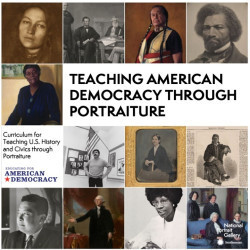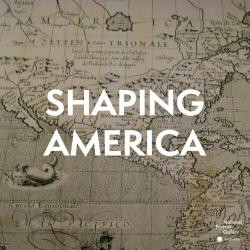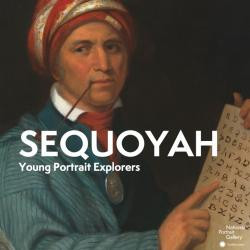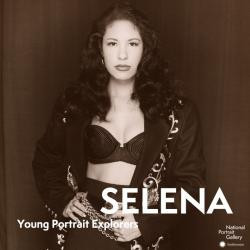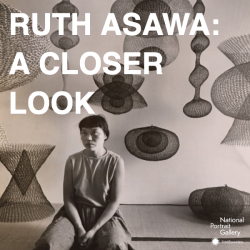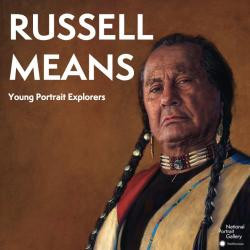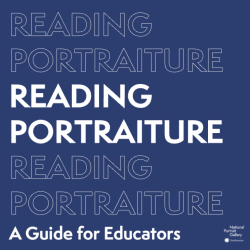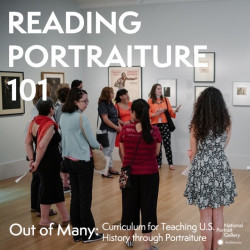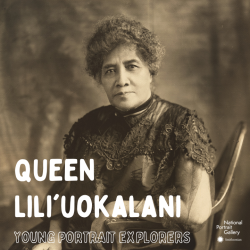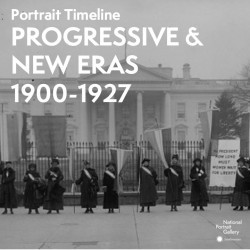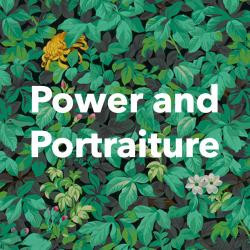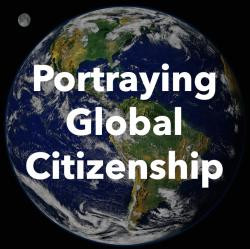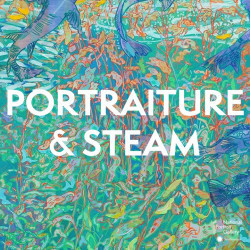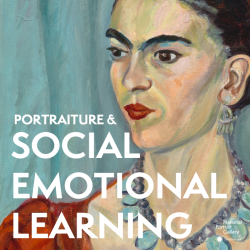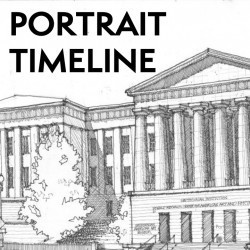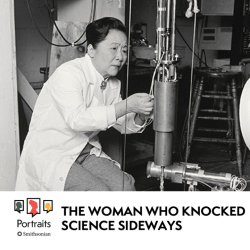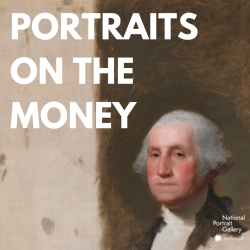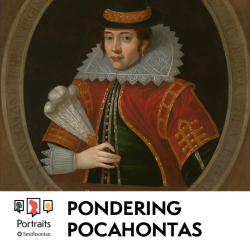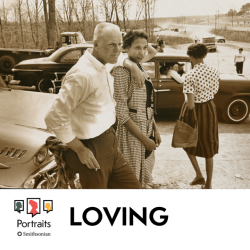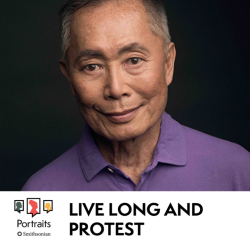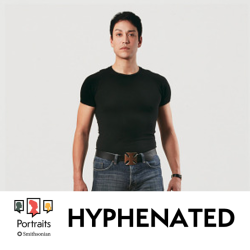Nicole Vance's collections
Teaching American Democracy through Portraiture
<p>This Learning Lab complements, "Educating for American Democracy" a roadmap for excellence in history and civics featuring portraits from 1600 to today. The portraits are used as entry points to teach about the history of the United States and civic values. This collection serves as a home base, organizing the following components: (1) Background Essay and Timeline; (1) About Educating for American Democracy; (2) Reading Portraiture 101; (3) Seven Themes: Lesson Plan; (4) Design Challenges: Artmaking Prompts.</p>
<p>Throughout these Learning Lab collections, students will examine not only the portraits’ subjects and artists but will also gain insight into the larger historical time period in which the subjects lived. By studying the portraits, students will be able to understand how the sitters in these portraits exercised agency and explored civic themes. </p>
<p>Educators will come to this Learning Lab collection from a wide range of disciplines and grade levels and can use the activities and resources as they see fit. The materials have been developed toward middle school social studies classes to allow teachers to scaffold lessons and add extension activities as needed. This Learning Lab collection was designed to be integrated with flexibility. It can be used in order, as single-time activities, or in various combinations to support existing topics in the curriculum.</p>
<p>#NPGteach</p>
 Nicole Vance
Nicole Vance
19
Shaping America: Exploring Portraiture from the Colonial Era to the Civil War
<p>This Learning Lab complements the National Portrait Gallery's student program, Shaping America.</p>
<p>Meet the politicians, reformers, inventors, authors, soldiers, and others who shaped the course of American history from the Colonial Era through the Civil War. Students will analyze portraits to learn about the diverse and significant contributions to American society made by individuals in the National Portrait Gallery’s collection.</p>
<p>#NPGteach<br></p>
<p><strong>Objectives:</strong> After completing this lesson, students will be better able to:</p>
<ul><li> Identify important Americans and analyze their contributions to U.S. History</li><li>Identify key components of a portrait and discuss what we can learn about the sitter through these components</li></ul>
<p><strong>Keywords: </strong>Colonies, Revolutionary War, Westward Expansion, Civil War, Abolition, Suffrage</p>
 Nicole Vance
Nicole Vance
72
Sequoyah: Young Portrait Explorers
<p>Learn about Sequoyah (c. 1770 – 1843), creator of the Cherokee syllabary (symbols used like an alphabet), and practice writing skills.</p>
<p></p>
<p>#NPGteach</p>
<p></p>
<p>Keywords: Sequoyah, Cherokee, Writing, Syllable</p>
 Nicole Vance
Nicole Vance
32
Roger Shimomura: Young Portrait Explorers
<p>Learn about artist Roger Shimomura and how he uses his paintings to express his identity (what makes someone unique).</p>
<p>Keywords: Roger Shimomura, George Washington, Japanese American, Identity</p><p>#NPGteach</p>
 Nicole Vance
Nicole Vance
32
Revolution and New Nation (1763-1815) with the National Portrait Gallery
<p>This portrait timeline spotlights portraits of individuals who shaped the history, development, and culture of what is now the United States of America between the years 1763 and 1815.</p>
<p>#NPGteach</p>
<p>Keywords: Revolution, Revolutionary War, Continental Congress, Democracy, Patriot, Declaration of Independence, Constitution</p>
 Nicole Vance
Nicole Vance
72
Reading Portraiture: A Guide for Educators
<p>The National Portrait Gallery tells the story of the United States by portraying the people who shape the nation’s history, development, and culture. These individuals understand who we are and remind us of what we can aspire to be.</p>
<p>In this guide, you will discover how to teach students to spot visual clues in portraits and then analyze them, similar to dissecting a historical document. Teaching students to use close reading skills with portraiture will produce a rich and memorable investigation of both the sitter and the artist. Use the close looking strategies in this collection as a springboard for classroom conversations. Portraits present insights into history and biography, prompt writing in the classroom, inspire students to create self-portraits, and even offer great ties to science and mathematics.<br></p>
<p>The Learning to Look strategies in this guide offer unique ways to engage in close looking and portraiture with your students. The Elements of Portrayal provide more guiding questions to help you and your students learn how to read portraiture.</p>
<p>#NPGteach</p>
<p>#SummerSessions<br></p>
 Nicole Vance
Nicole Vance
85
Power and Portraiture
<p>Power and Portraiture highlights the ways in which artists and sitters use portraiture as a means to convey power. By analyzing portraiture, students will consider how power is visualized, gained, used, justified, and revoked. Students will explore the powerful contributions to the history and culture of the United States through portraits of the following individuals:</p>
<ul><li>Rosa Parks</li><li>Belva Lockwood</li><li>Eunice Kennedy Shriver </li><li>LL Cool J</li><li>Henrietta Lacks</li><li>An Unidentified Enslaved Woman</li></ul><p><strong>Objectives:</strong> After completing this lesson, students will be better able to: </p>
<ul><li>Examine how modern and contemporary artists use portraiture to reveal aspects of a sitter’s individual, community/cultural, and national identity. </li><li>Identify key components of a portrait and discuss what one can learn about the sitter through these components. </li><li>Discuss the artistic choices that portrait artists make and consider how such decisions can reveal the artists’ viewpoints and also influence the viewers’ understanding of the sitters’ identity. </li><li>Use the museum’s collection as a gateway to investigating and exploring of the visualization of power.</li></ul><p><strong>Keywords</strong></p>
<p>Portraiture, Power, Rosa Parks, Civil Rights, Social Justice, Belva Lockwood, Women's Suffrage, Eunice Kennedy Shriver, Disabilities, Special Olympics, LL Cool J, Rap Music, Henrietta Lacks, STEAM, Enslavement, Sally Hemings, #NPGteach</p>
 Nicole Vance
Nicole Vance
52
Portraying Global Citizenship
<p>Students will analyze portraiture as it relates to global citizenship. Students will identify specific situations where human or cultural factors are involved in global conflict and identify different viewpoints in the struggle and will recognize the cultural contributions of various ethnic groups in the United States to the world.</p>
<p>This learning lab module addresses the following questions through portrait conversations:</p>
<ul><li>What is the role of the US in the world?</li><li>What does it mean to be a global citizen?</li><li>What are some ways that historical figures participated as an active member of the global community?</li><li>What choices did historical figures make that positively impacted you, others, or the environment?</li><li>What choices did historical figures make that negatively impacted you, others, or the environment? </li><li>Is the United States a melting pot or a salad bowl?</li></ul><p>#NPGteach</p>
<p><br /></p>
 Nicole Vance
Nicole Vance
74
Portraiture and STEAM (Science, Technology, Engineering, Art, and Math)
<p>This Learning Lab Collection complements the National Portrait Gallery student program, Portraiture and STEAM.</p>
<p></p>
<p>Students will explore the ways portraiture can be a springboard to discuss STEAM concepts (Science, Technology, Engineering, Art, and Math). By analyzing portraits, students will consider the sitters’ stories and recognize their contributions to the various STEAM fields. During the program, there will be opportunities to examine a broad range of STEAM topics to allow for classroom connections and emphasis on relevance. </p>
<p></p>
<p>After completing the program, students will be better able to:</p>
<ul><li>Identify key components of a portrait and discuss what one can learn about the sitter through these components.</li><li>Identify and analyze the contributions that sitters made in their STEAM fields of expertise.</li><li>Use the museum’s collection and portraiture as a springboard to exploring a variety of STEAM concepts.</li></ul>
<p>#NPGteach</p>
 Nicole Vance
Nicole Vance
75
PORTRAITS Podcast: Portraits On The Money
<p>In this lesson, students will analyze portraits included on American money, explore American symbolism and learn more about the time in which the currency was created. Students will also have the opportunity to listen to the perspectives of art historians and former Treasurers, and explore the applications portrait in American money past, present, and future.</p>
<p>This lesson plan was written by NPG Teacher Advisory Board Member Tom Bober who works as the District Library Coordinator + Library Media Specialist at the School District of Clayton in Clayton, Missouri.<br></p>
<p></p>
 Nicole Vance
Nicole Vance
38
PORTRAITS Podcast: Pondering Pocahontas
<p>In this collection, students will be better able to identify key elements of a portrait and discuss what we can learn about the sitter through these elements. They will also investigate how these elements may reveal the viewpoints of artist, sitter, and viewer while practicing media literacy skills. </p>
<p>This lesson was written by Erin Koester Tusell, Gallery Educator at the National Portrait Gallery.</p>
 Nicole Vance
Nicole Vance
27
PORTRAITS Podcast: On the Beat
<p>In this lesson, students will analyze the power of perspective, reflect on "drawn journalism" as portraits, and engage in meaning making around objects in their lives using portraits by artist Wendy McNaughton.<br></p>
<p>This lesson plan was written by NPG Teen Programs Specialist, Sahtiya H. Hammell.</p>
 Nicole Vance
Nicole Vance
24

